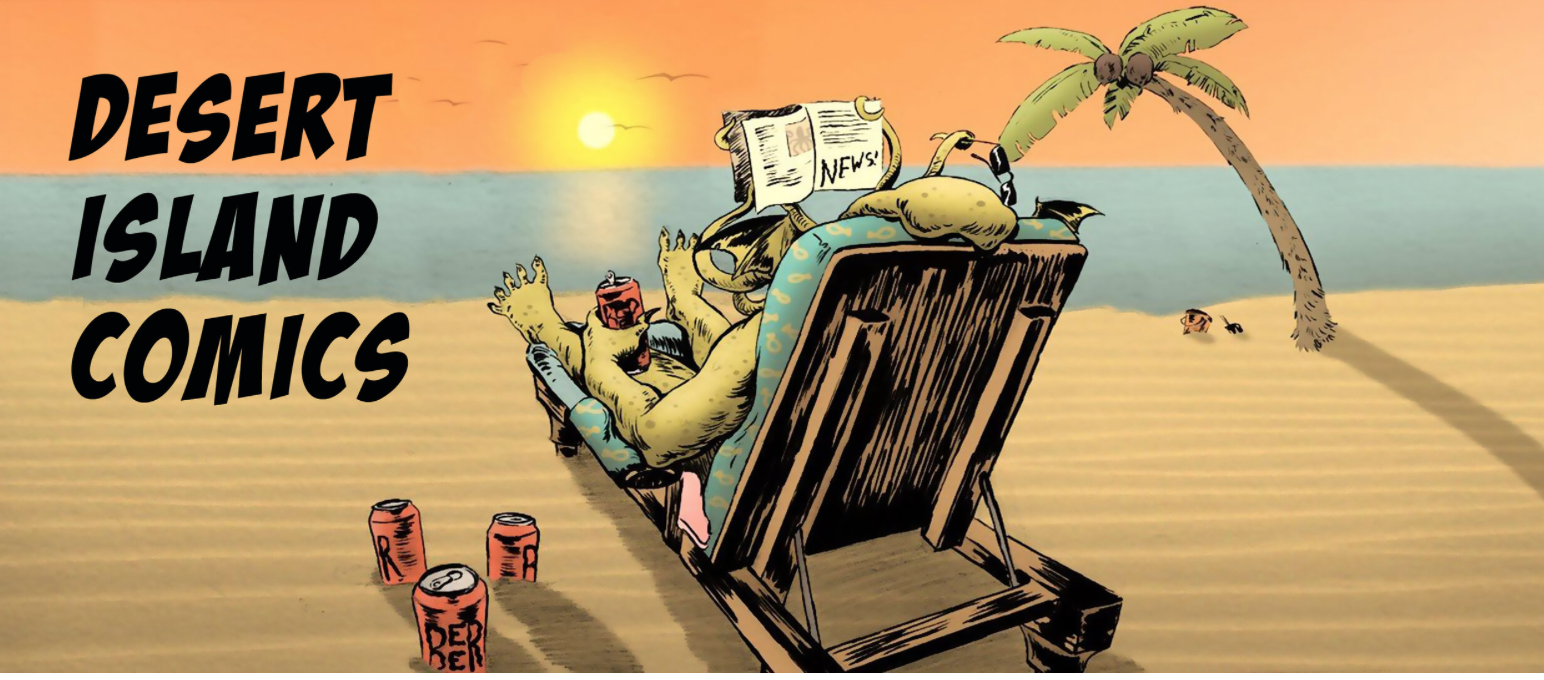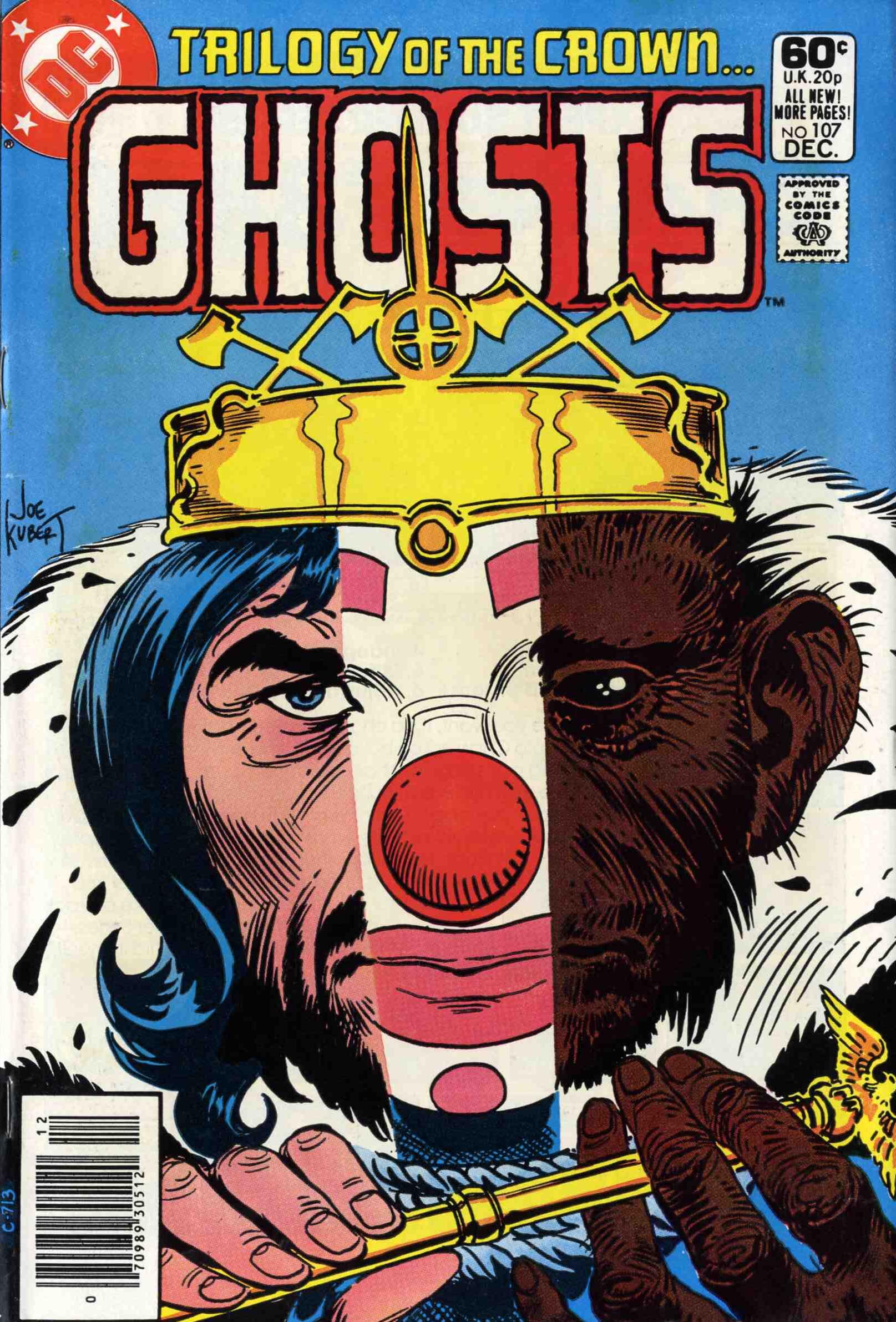Desert Island Comics (Issue 2) Andrew Edwards
/It would be easy to choose five comics written by Alan Moore to fill this list. After all, I decided to do my PhD on his work, but it feels a lot like cheating to just rattle of what I think are his five best works (From Hell, Watchmen, The League of Extraordinary Gentleman, Miracleman and Swamp Thing, if you’re interested). So I thought it would a bit fairer, and more interesting, to choose my top five single issue comics instead (mostly), and focus on some obscure choices to throw into the mix too.
Sandman #14
My first experience of reading Sandmanwas buying #1 and #2 when they were first published. I bought them on a school trip to London, along with Black Orchid#1-3 and the trade paperback of Frank Miller’s Dark Knight Returns. I religiously bought Sandmanas a monthly comics throughout its entire run, but it’s some of the early issues that stay in my memory the most clearly, and none more so than #14’s ‘Collectors’. I was disturbed by the concept – a serial killer convention – and various moments that have imprinted themselves on my memory ever since. It’s the contextualisation of the serial killer within the quotidian convention that disturbed me then, and still does now. It feel like an uncomfortable possibility. I re-read it a few days ago, for the first time lord-knows-how-many years, and it’s power remains undimmed. I’d place it in Gaiman’s top 10 works easily.
Ghosts #107
Sticking with horror, this issue is one from childhood that I randomly bought from a newsagents in, I think, Bala in North Wales, sometime in the early 80s. Trips to places were my opportunity to call in to random newsagents who often had piles of older American comics cluttering up their shelves, although I distinctly remember this comic being on a spinner rack, probably the first one I ever saw.
I was a reader of British humour comics The Dandy and The Beano, alongside the occasional American comic that I could find on trips (DC dominated my finds). Ghosts#107 was the first non-humour, non-superhero comic I’d ever read and, boy, did it make its mark on me. It was a three part tale of a medieval crown that made its way through history causing tragedy for those who wore it. The stories were scripted by Robert Kanigher, with art by Howard Bender, Rodin Rodriguez and Adrian Gonzales. For a kid used to the slapstick comedy of humour comics, and superhero battles, this comic introduced me to the way that the sweep of history, and historical artefacts, can profoundly influence and change lives. It’s worth checking out the back issue bins for.
Watchmen #4
OK, so an Alan Moore-scripted comic has made it on to my list despite my self-imposed restrictions, but I’ve limited myself to a single issue. And what an issue it was! I first read Watchmenin single issue form, in one sitting, in the late eighties, and #4 really brought home to me just how different this series was going to be. I would have been around 13 or 14 when I read it, and it was the first time that I became consciously aware of how narrative and structure can be used for effect. I showed me that narratives didn’t have to start at point A and move chronologically through B, C, D etc. You could skip, repeat, move backwards and forwards, and experience the use of time in comics in new and exciting ways. All these years later, it is still my favourite issue of the series.
Marvel Superheroes Secret Wars #2 (UK Edition)
Ok, ok – I can almost hear some of you sniggering at the back… For its time, and for an 11 year old boy like I was, this was incredible. My only previous exposure to superhero comics was the odd DC I randomly found on trips from home. I’m not referring to the US version either, but the Marvel UK version. Here I discovered the X-Men, Avengers, Dr Doom, Magneto and more. I loved the bizarre portraits of Marvel heroes created by the Secret Artist, and enjoyed the reprints of John Byrne’s Alpha Flighttoo; both first appeared in #2, which is why I’ve chosen this particular issue. This was the gateway to American super heroes, and American comics, and for that I’ll always be grateful.
Brief Interlude
It’s clear that nostalgia is currently dominating my thinking. Perhaps it’s because I’m getting older, and perhaps its heightened by the new changes we are all experiencing in real life. I do also love modern comics, but it’s the comfort that memories of childhood and comics that have influenced my choices. Even then, another day may have seen me choose something by Harvey Pekar, or Art Spiegelman’s Maus, or even the Giffen - Dematteis Justice League. It was hard to narrow this list down to five, let me tell you. However, in breaking all previous conventions in this list, here’s my final choice.
Black Hammer
I’ve only recently read (binged) all of these comics by Jeff Lemire and artist Dean Ormston, and while I haven’t processed my thoughts on them in any intellectual or critical way, I can say that I loved them on the level of my gut reaction. I found them captivating because it tickles the parts of me that love superhero comic history, alternative worlds in science fiction, Twin Peaks level weirdness, and older and disillusioned heroes struggling to make meaning for their lives and their world. It’s a stone cold contemporary classic that you are compelled to keep reading to find out what happens next.
Dr Andrew Edwards is a writer and scholar. His research interests include comics and graphic novels, science fiction, horror, intertextuality, and representations of gender. He is currently working on a number of writing projects. He is also an Academic Skills Tutor at Wrexham Glyndwr University. He can be followed on Twitter: @AndrewEdwards88








